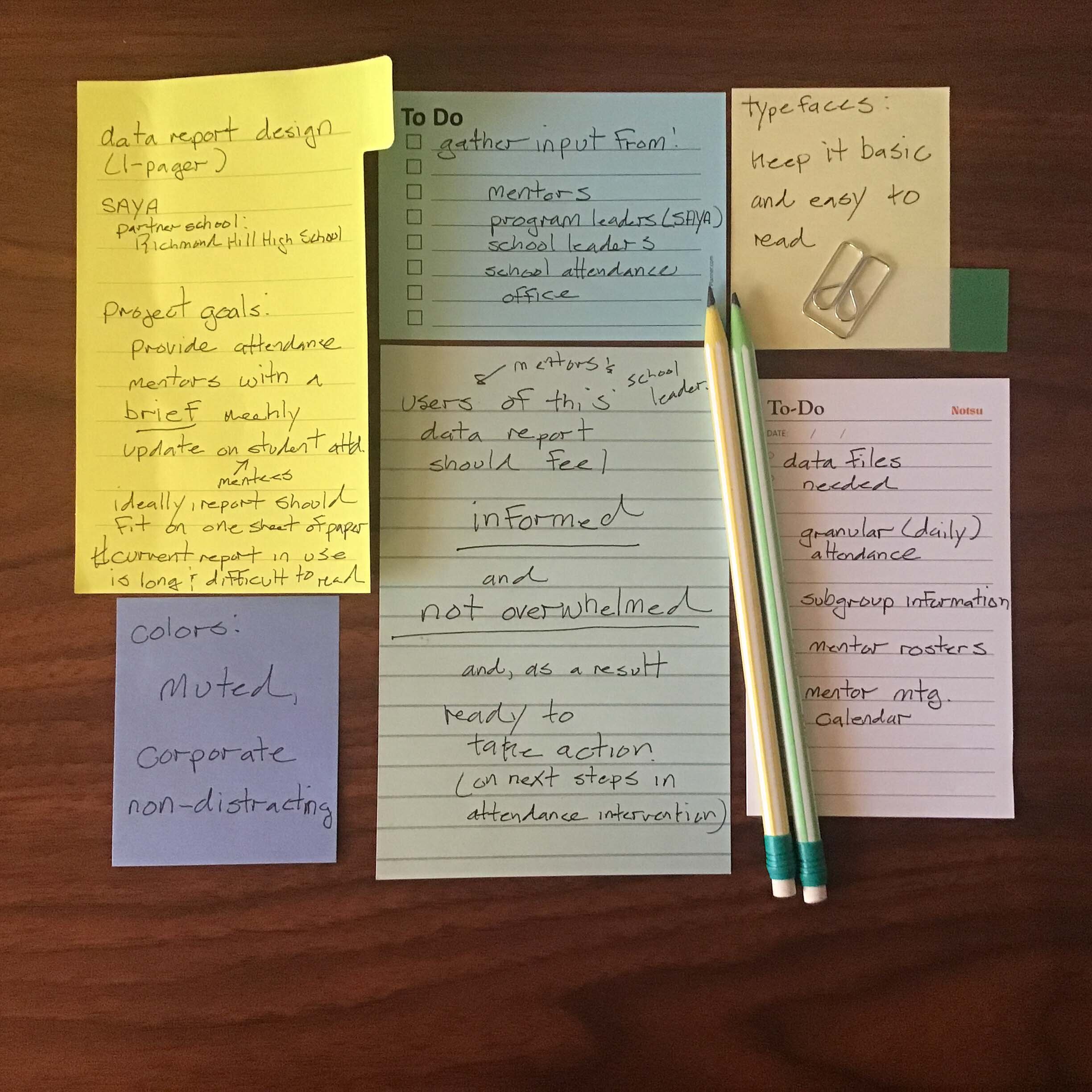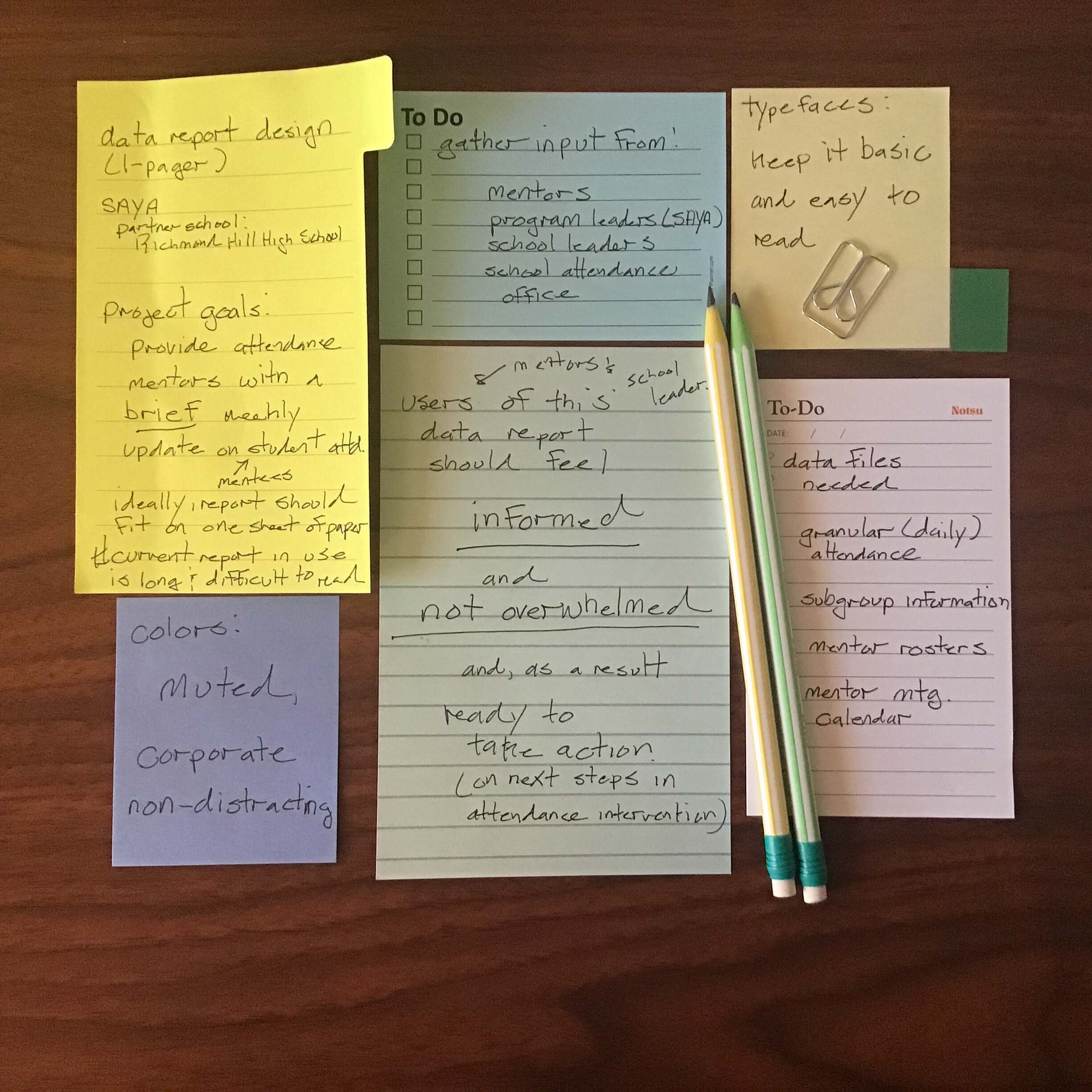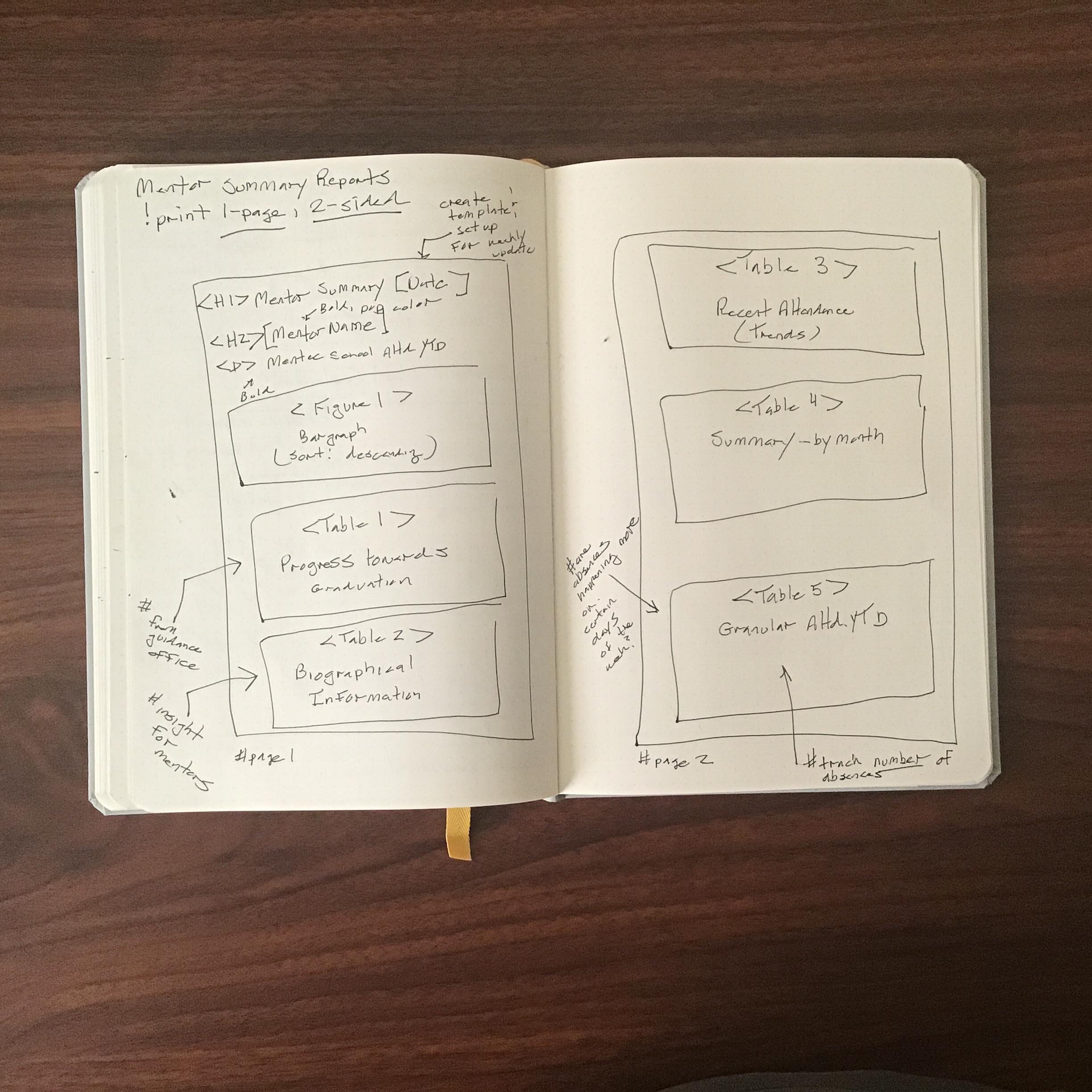Case Study 011. South Asian Youth Action (SAYA!) Mentor Summaries: Step 1
Step 1 - Discovery
My very first step was to meet with the mentors so I could gain an understanding of exactly what they needed from a weekly data report. I learned that much of the information they were receiving was not relevant and furthermore, the information they actually did need was buried deep inside a mountain of other data. I began to strategize a way to cull the data and bring the most pertinent information to the surface.
Step 1 - Discovery
My very first step was to meet with the mentors so I could gain an understanding of exactly what they needed from a weekly data report. I learned that much of the information they were receiving was not relevant and furthermore, the information they actually did need was buried deep inside a mountain of other data. I began to strategize a way to cull the data and bring the most pertinent information to the surface.
Case Study 011. South Asian Youth Action (SAYA!) Mentor Summaries: Step 2
Step 2 - Sketch
As I began to work with the data, the most pertinent data points began to rise to the surface. I set up the report to highlight that information. I wanted each mentor to be able to digest all of the most important information about their mentees at a glance.
Step 2 - Sketch
As I began to work with the data, the most pertinent data points began to rise to the surface. I set up the report to highlight that information. I wanted each mentor to be able to digest all of the most important information about their mentees at a glance.
Case Study 011. South Asian Youth Action (SAYA!) Mentor Summaries: Step 3
Step 3 - Prep Data
I identified the sources of information needed to make the reports and I began collecting the raw data. Since this was a report that would have to be updated on a weekly basis, I made sure to organize the data files in such a way that they could be updated quickly. I had to ensure that all of the columns for each category of data would line up exactly, every time.
Step 3 - Prep Data
I identified the sources of information needed to make the reports and I began collecting the raw data. Since this was a report that would have to be updated on a weekly basis, I made sure to organize the data files in such a way that they could be updated quickly. I had to ensure that all of the columns for each category of data would line up exactly, every time.
Case Study 011. South Asian Youth Action (SAYA!) Mentor Summaries: Step 4
Step 4 - Build
To create the reports, I used Tableau to merge the various component data sources and present the consolidated information a concise, easily digestible report.
Step 4 - Build
To create the reports, I used Tableau to merge the various component data sources and present the consolidated information a concise, easily digestible report.
Case Study 011. South Asian Youth Action (SAYA!) Mentor Summaries: Step 5
Step 5 - Publish
Having finished the design and build out process, I moved on to producing the individualized reports. At each team meeting, I printed out a hard copy report for each mentor. The entire report fit on a single sheet of paper (printed front and back). I also emailed them a PDF soft copy. All of the information on each mentor’s report was specific to the mentees in their own caseload. Throughout the school day, the mentors held one-on-one meetings with their mentees. During these meetings, mentors often referred directly to to the printed reports I had produced for them. The mentors told me that the new reports were very helpful to them in communicating with their mentees and keeping them focused on their goals.
Step 5 - Publish
Having finished the design and build out process, I moved on to producing the individualized reports. At each team meeting, I printed out a hard copy report for each mentor. The entire report fit on a single sheet of paper (printed front and back). I also emailed them a PDF soft copy. All of the information on each mentor’s report was specific to the mentees in their own caseload. Throughout the school day, the mentors held one-on-one meetings with their mentees. During these meetings, mentors often referred directly to to the printed reports I had produced for them. The mentors told me that the new reports were very helpful to them in communicating with their mentees and keeping them focused on their goals.










